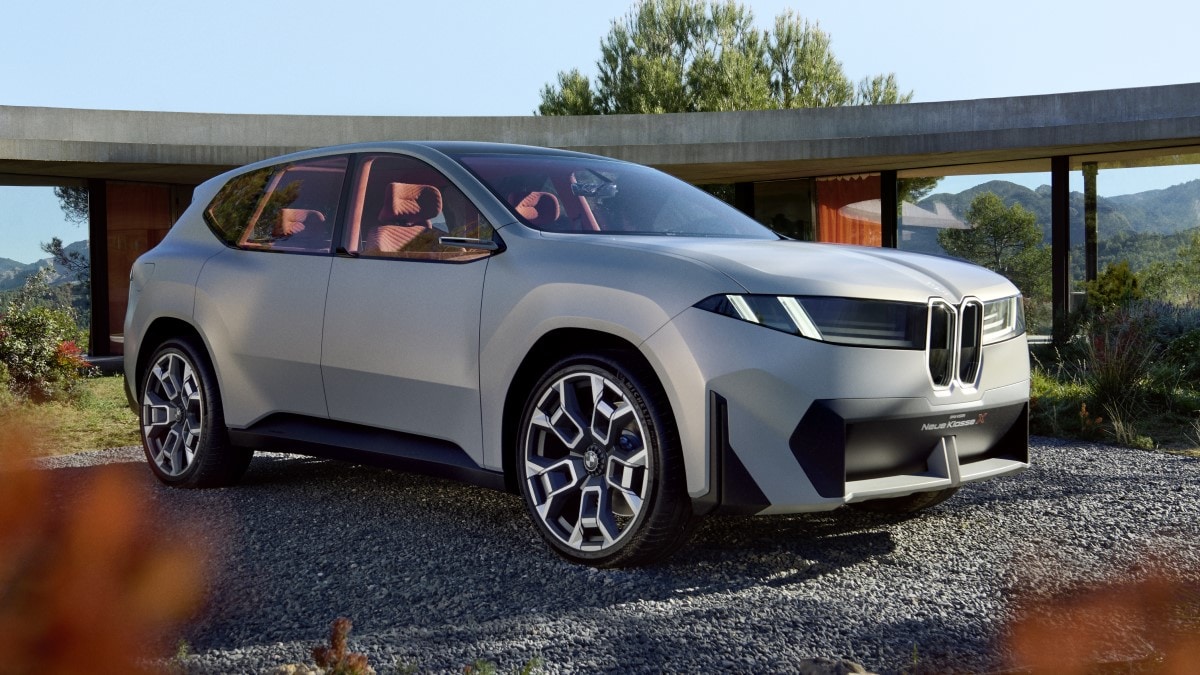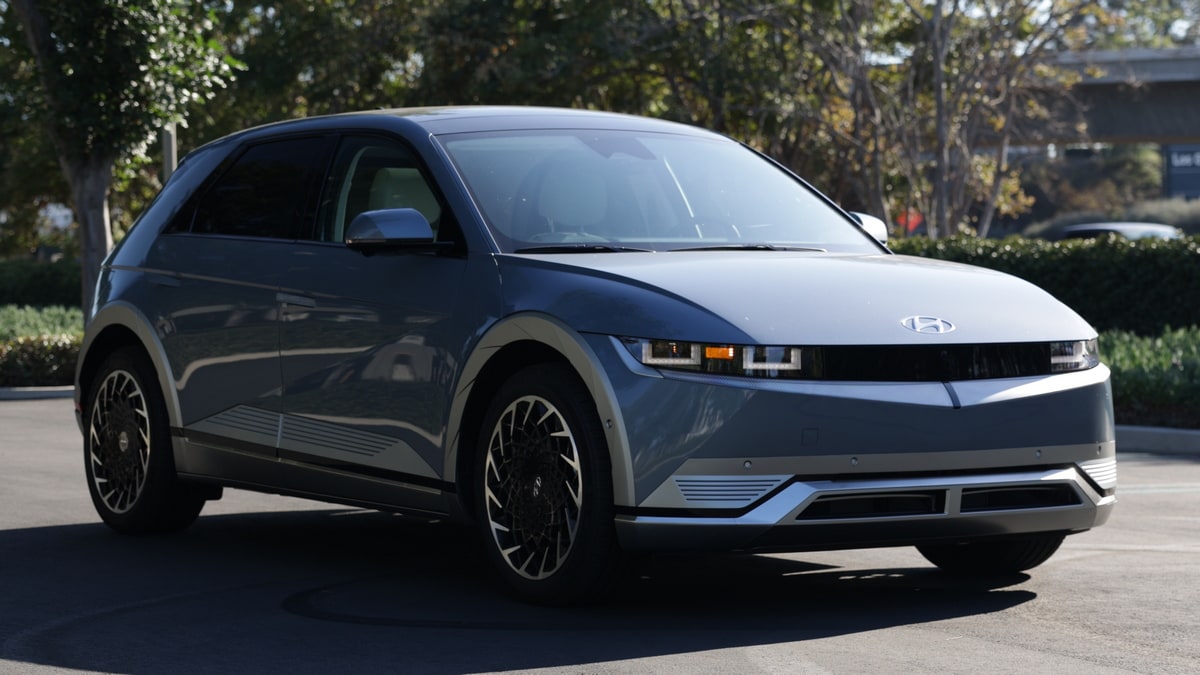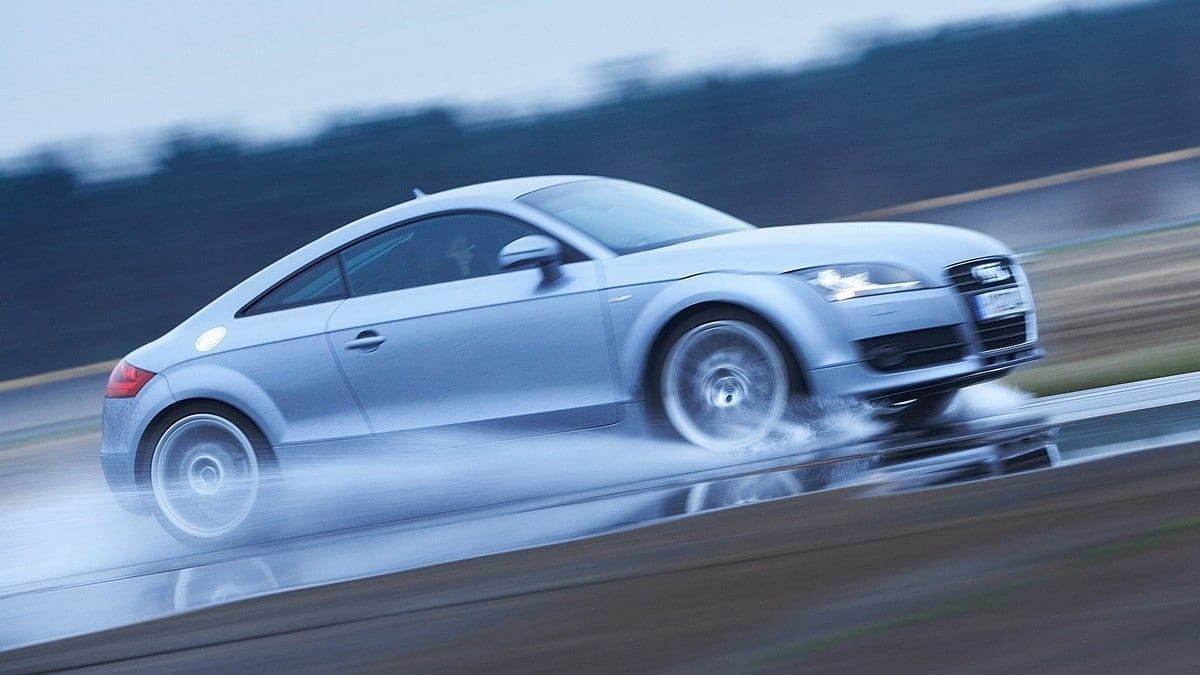Last year, BMW did something veterans of the auto industry thought impossible: It previewed a new design language BMW fans actually liked.
Complaining that the new ones are ugly is most BMW enthusiasts’ favorite hobby. They buy the new ones anyhow. But they say the old ones looked better.
So everyone’s eyes went wide when BMW released a concept car previewing its future and the faithful liked it. The Vision Neue Klasse was as high-tech as you’d expect any concept car to be, from the electric drivetrain to the windows that function as see-through screens. It showed a likely path toward a future 3 Series.
But it borrowed its lines from classic 1970s BMWs – we see a lot of 2002 in its shape – and that was what the fans had always wanted.
Now, BMW has unveiled the SUV equivalent. Er…excuse me…SAV equivalent. What the rest of the world calls Sport Utility Vehicles, BMW calls Sports Activity Vehicles.
The BMW Vision Neue Klasse X is the same design language rendered in crossover form. Think of it as the Someday X5.
It previews a production car. BMW says, “The first fully-electric SAV derivative on the new architecture will go into series production at Plant Debrecen, Hungary, in 2025.”
Less Classic Inspiration, Same Elegant Simplicity
The design is a bit less contiguous with the BMWs of the 1970s because BMW didn’t build an SAV back then. Its taller lines don’t remind you of classic BMW crossovers because there aren’t any.
But, next to current BMW SUVs, it’s blissfully simple. The classic twin-kidney grille is here, but appears tiny next to the oversized set on current Bimmers. It’s also fake…that is, “reimagined as a three-dimensional sculpture with vertically aligned and backlit contours.”
Diagonal slashes serve as daytime running lights flanking the…sculpture. The sides of the car, apart from some contouring on the fenders, are fairly simple.
That other classic BMW design element, the Hofmeister kink (a forward-sculpted notch at the bottom of the D-pillar), makes a cheeky appearance as a window graphic. A sculpted high roofline spoiler mirrors the notched look of the hood.
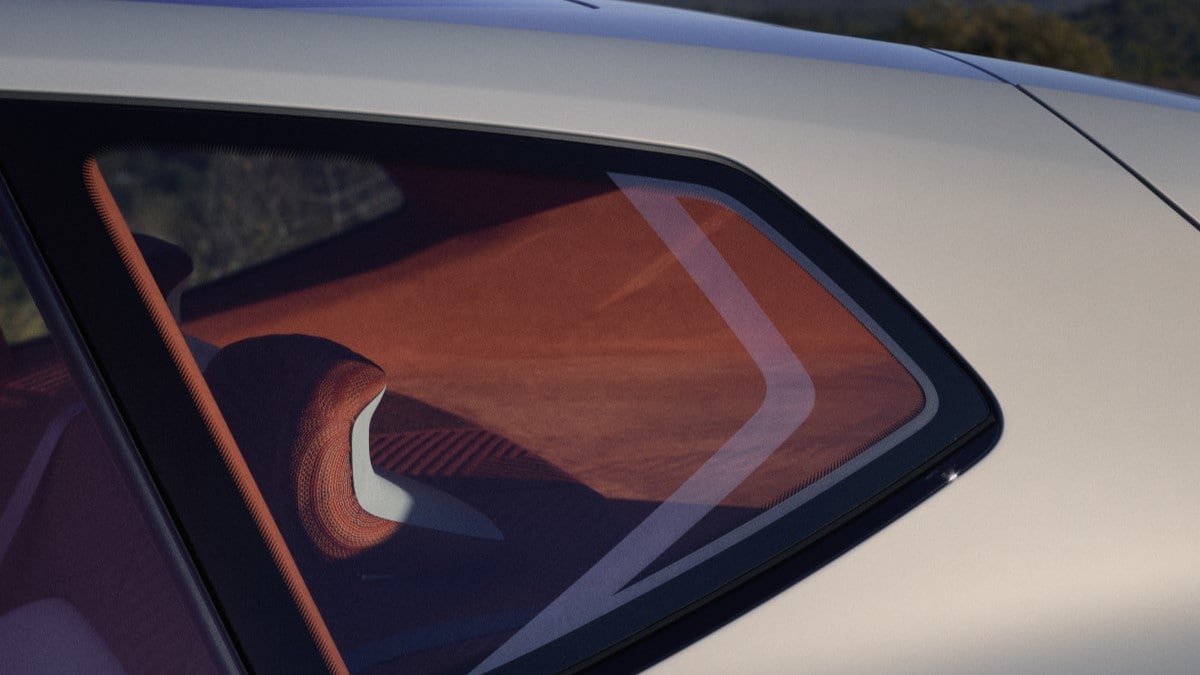
Single-Screen Interface, Textile-Heavy Cabin
Inside, the Vision Neue Klasse X is high-tech but less fanciful than the sedan equivalent – perhaps a sign that this is closer to production. Fabric-look surfaces abound – even the dashboard is wrapped in gray and muted orange textiles.
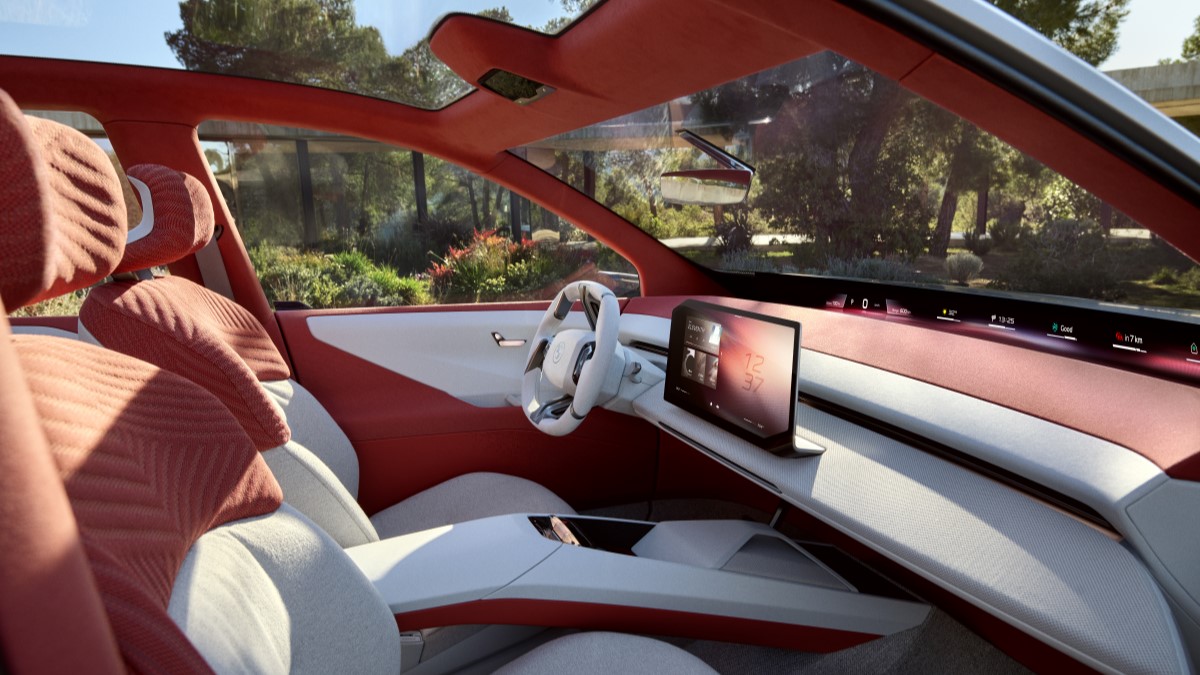
Every interior function appears to run through a single central screen. But BMW emphasizes voice controls, too. The company says a panoramic display “projects key information across the full width of the windscreen.” That’s not the all-windows-are-screens format of last year’s Vision Neue Klasse sedan. But it is something BMW could probably build for a realistic price.
“It will be complemented in production models of the Neue Klasse by the enhanced BMW 3D head-up Display,” the company says.
But if anything defines the interior, it’s simplicity.
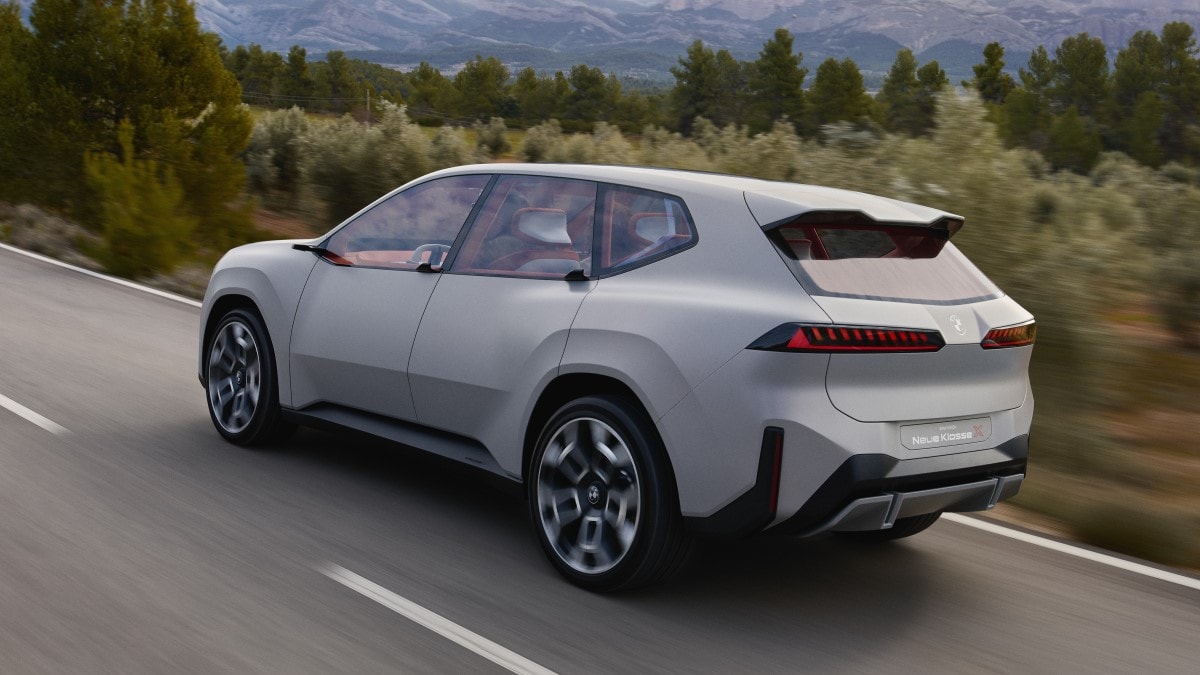
Electric, but Little Info on Performance
BMW says less about the driving experience. The company promises new battery cells with 20% more energy storage than its current electric vehicles (EVs). Aerodynamics and improved electric motors also promise more range, but BMW hasn’t put a number on it.
“A new type of drive and chassis control delivers a superior driving experience that is tailored to individual needs,” the company says. The improvements are software-based.
“Super-Brains”
BMW appears to be developing an entirely new lexicon to describe the technology. Development head Frank Weber says, “The BMW of the future will have four totally new super-brains: high-performance computers working smartly together on what, up until now, was processed separately. We developed the first super-brain completely in-house. It integrates the entire powertrain and driving dynamics with up to ten times more computing power. The second super-brain will enable the next quantum leap in automated driving.”
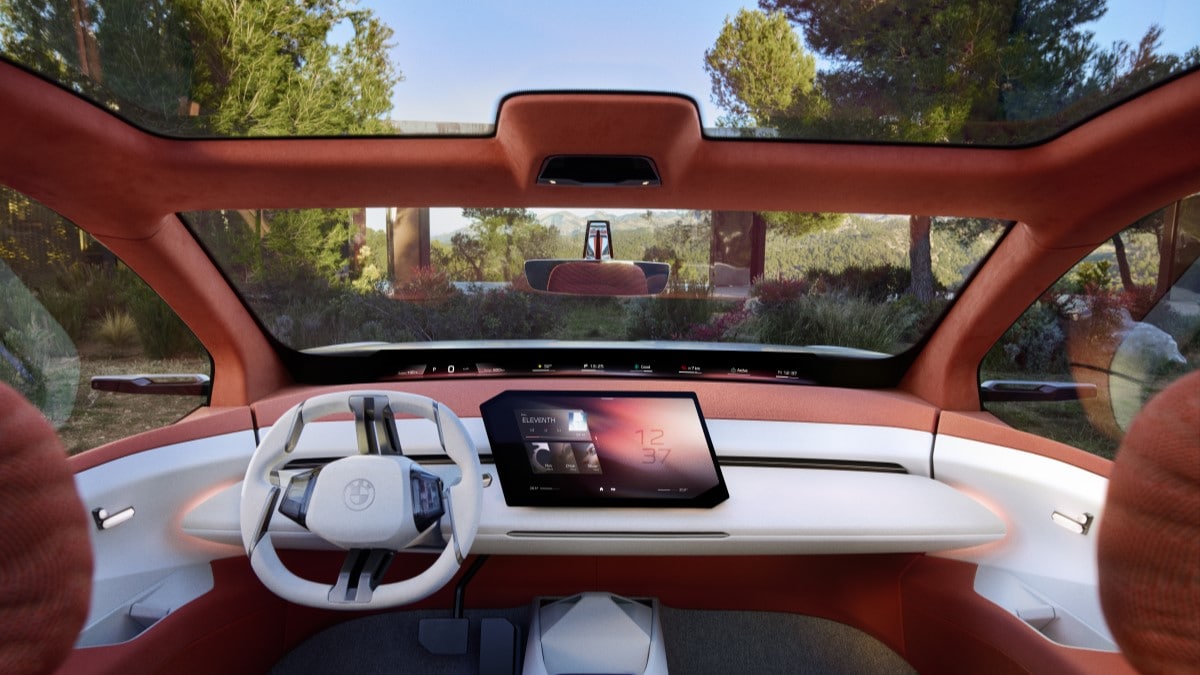
“Super-brain” is a unique way to explain it, but Weber is probably referring to something observers have long expected. Today’s cars use hundreds of tiny microchips – many low-power units common to the electronics of two decades ago – to control everything from engine timing to suspension tuning.
When the microchip shortage left automakers unable to build as many cars as the market demanded two years ago, many automakers made plans to use fewer, more powerful centralized computers instead.
They can’t easily make major design changes on the fly because of all the safety testing a car goes through. But we’ve long thought the next generation of cars could replace hundreds of distributed low-power processors with just a few, more powerful…well…”super-brains.”
A Version Likely as a 2026 Model
The Vision Neue Klasse X is just a concept for now. But the technologies within it appear to be growing less fanciful and more production-ready.
“Production of the Neue Klasse gets underway in 2025,” BMW says. The cars that go on sale then – likely 2026 models – won’t quite be these. But these models will inspire them.

